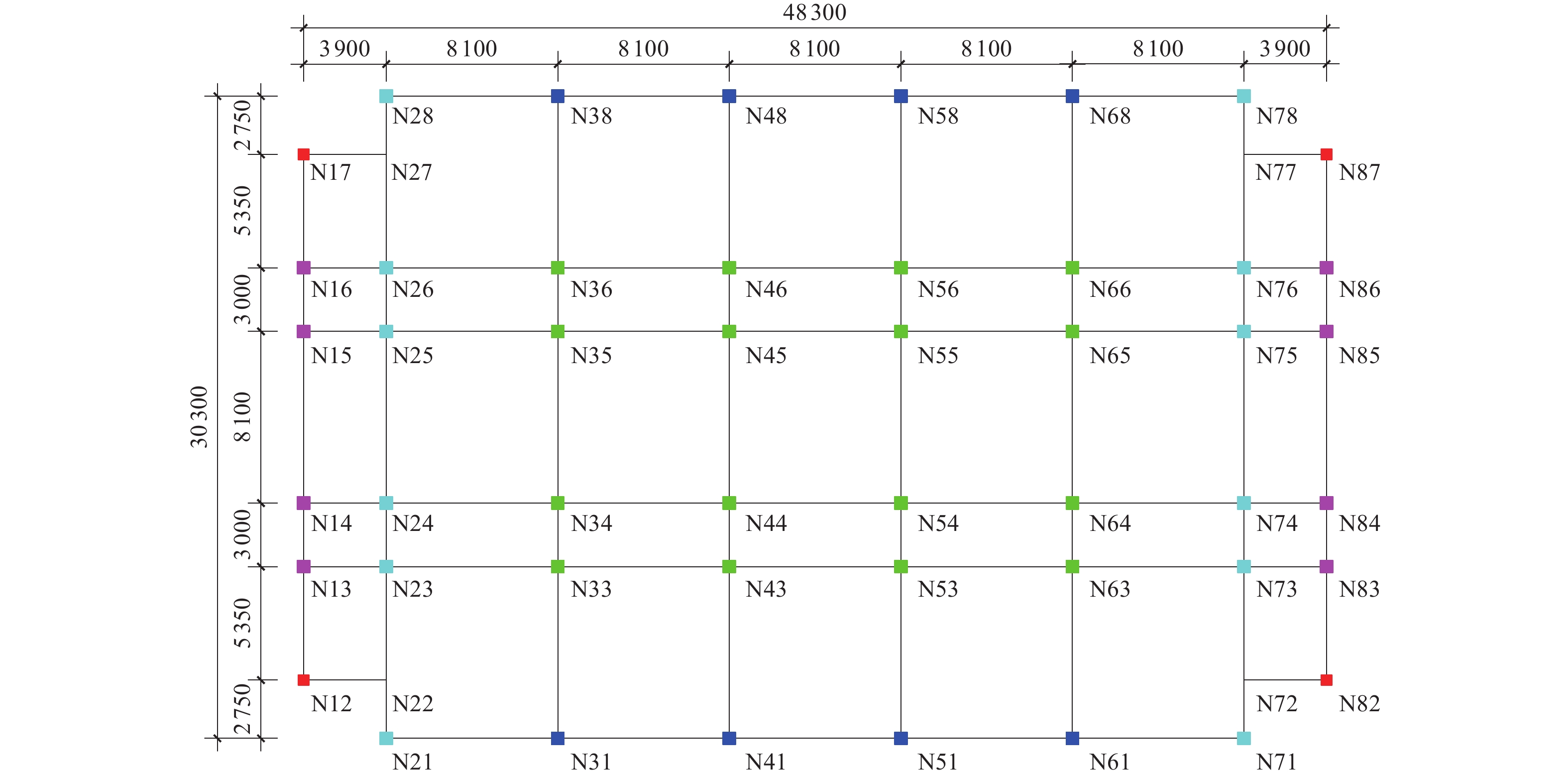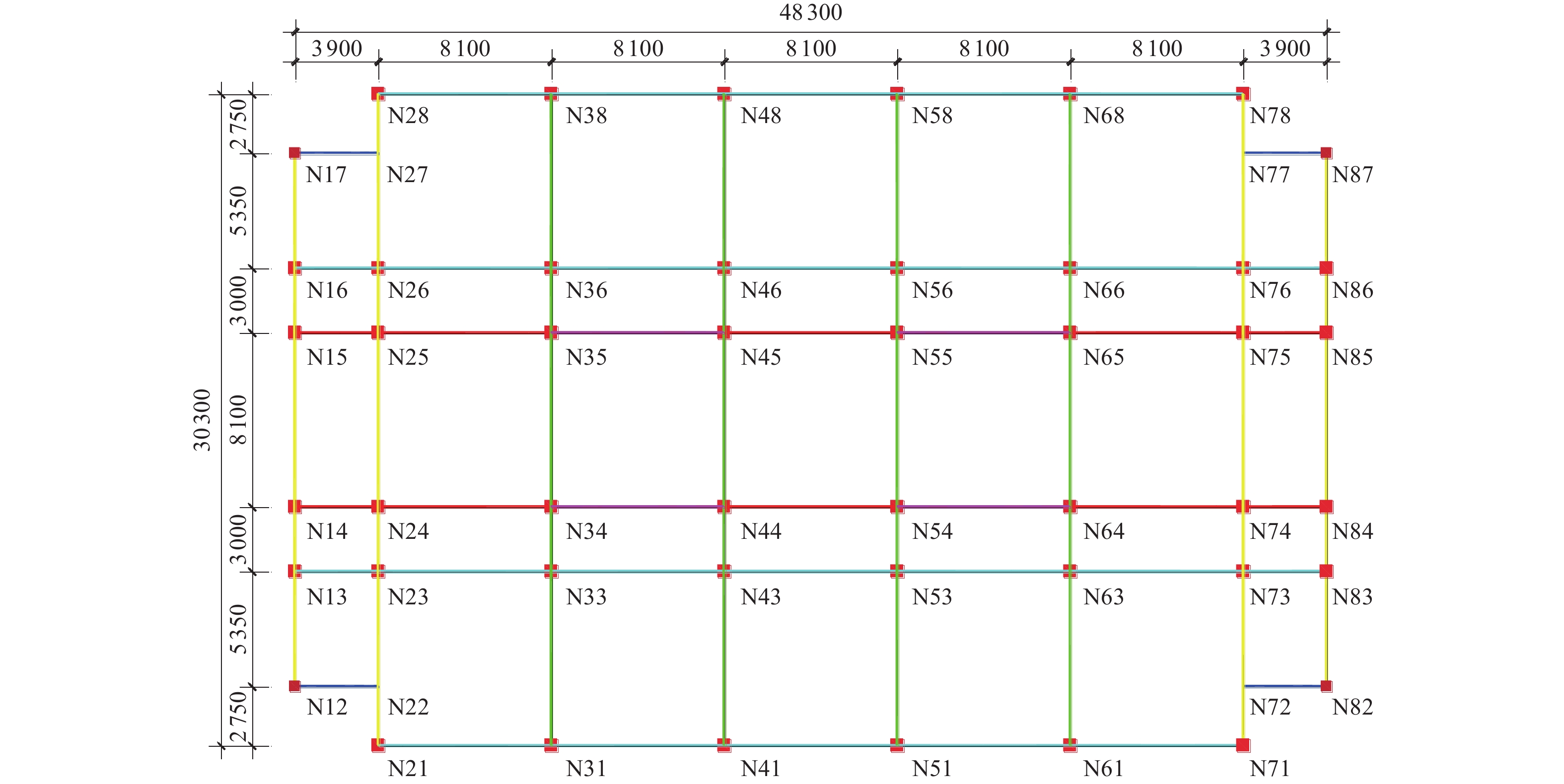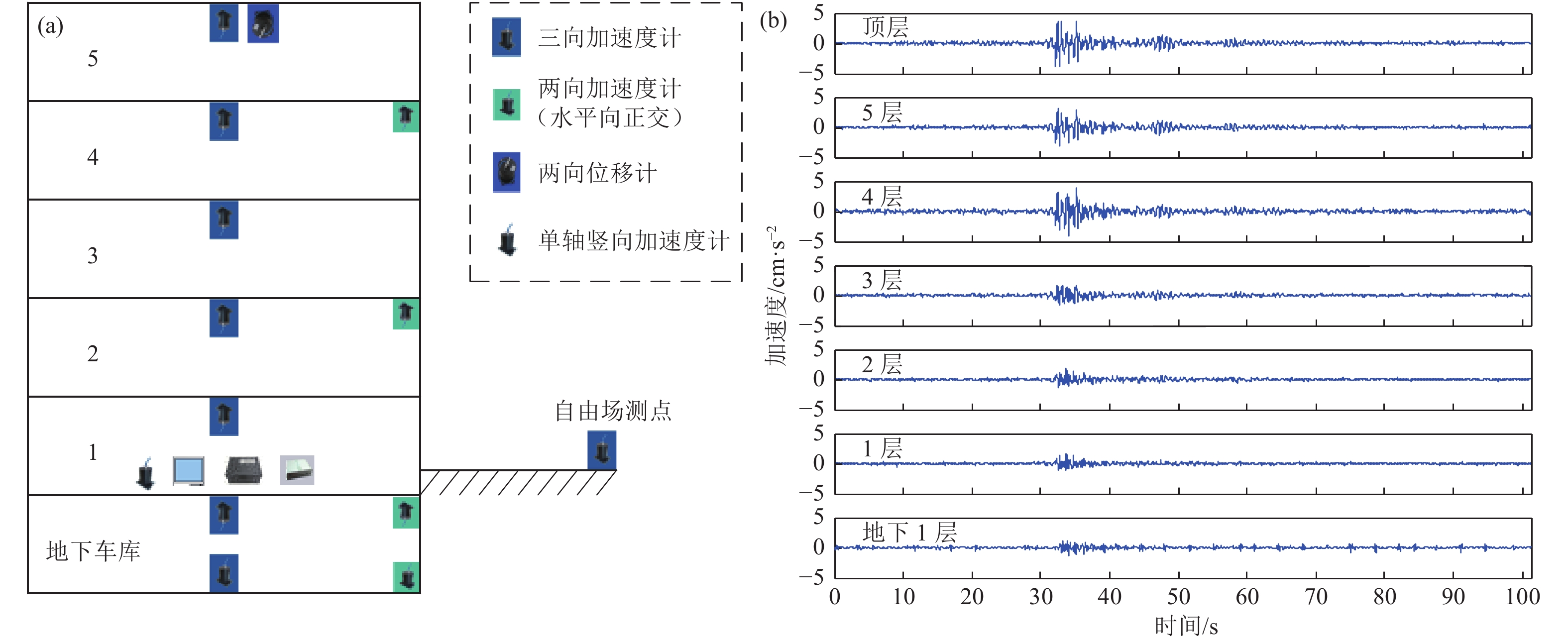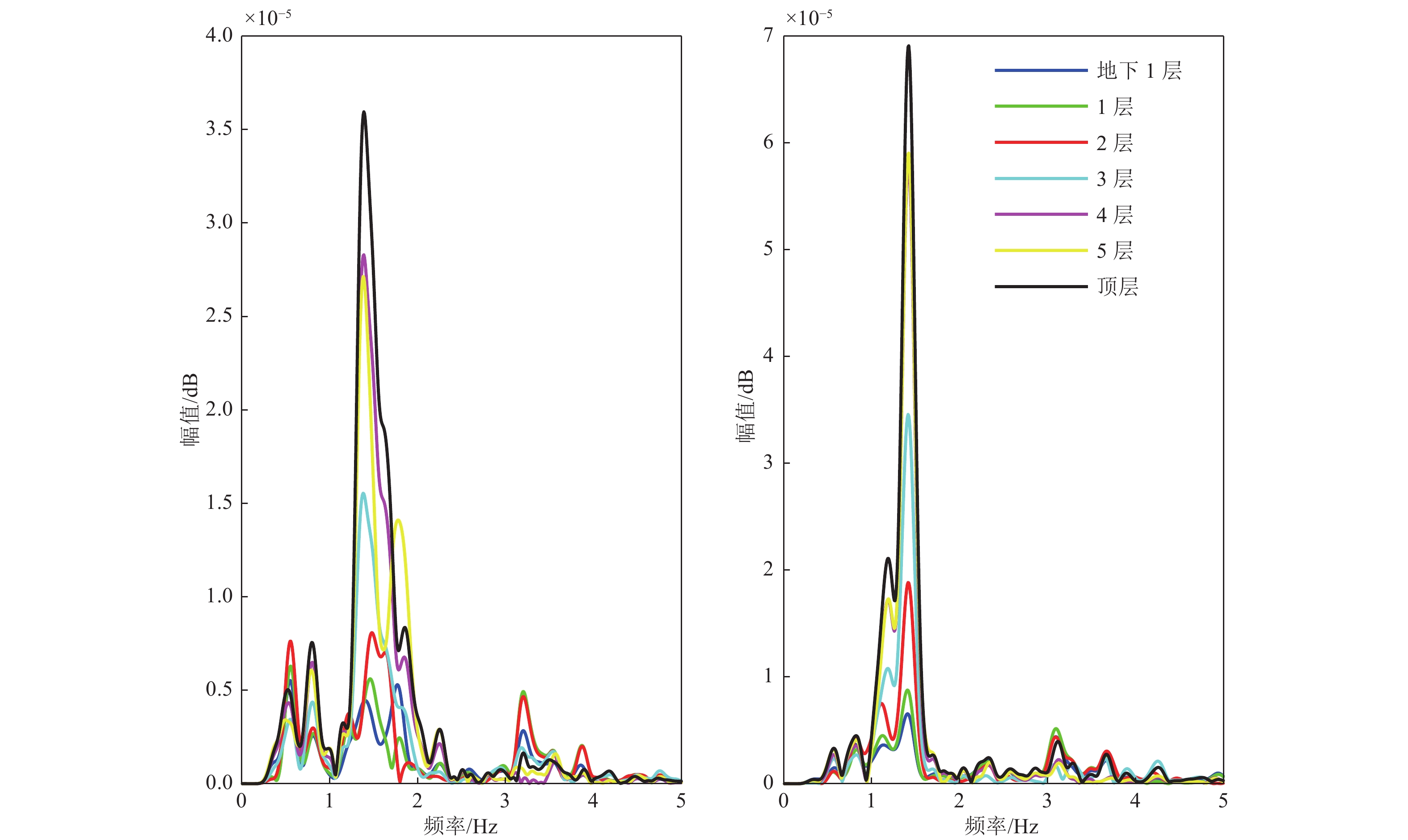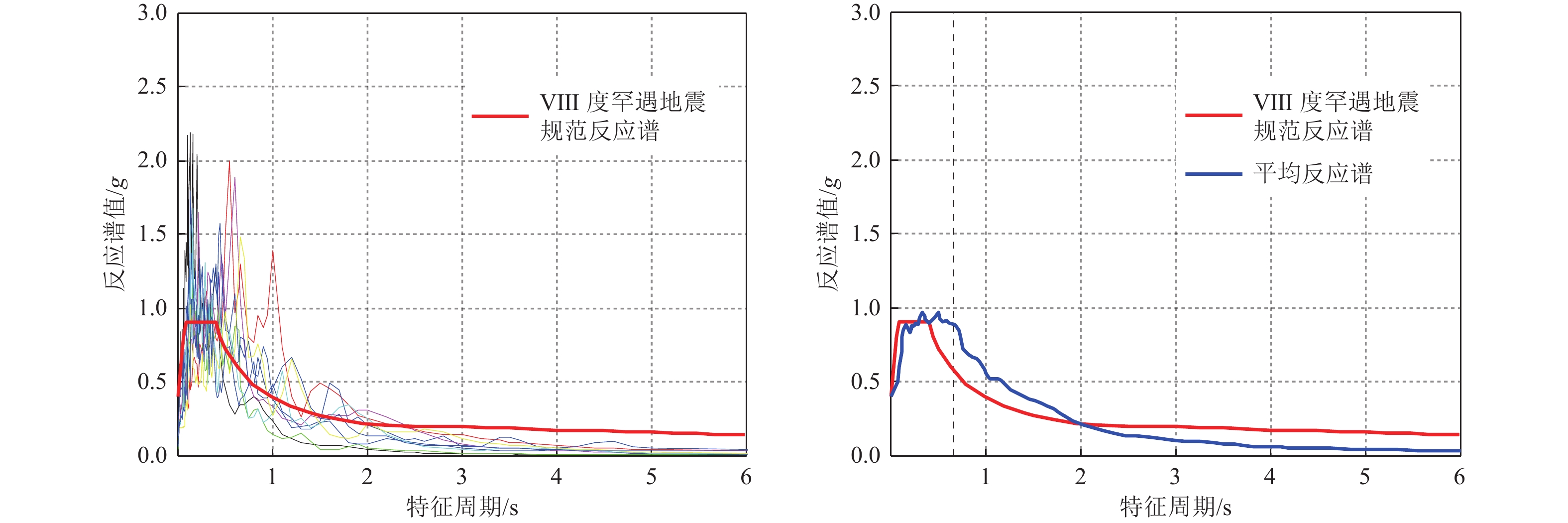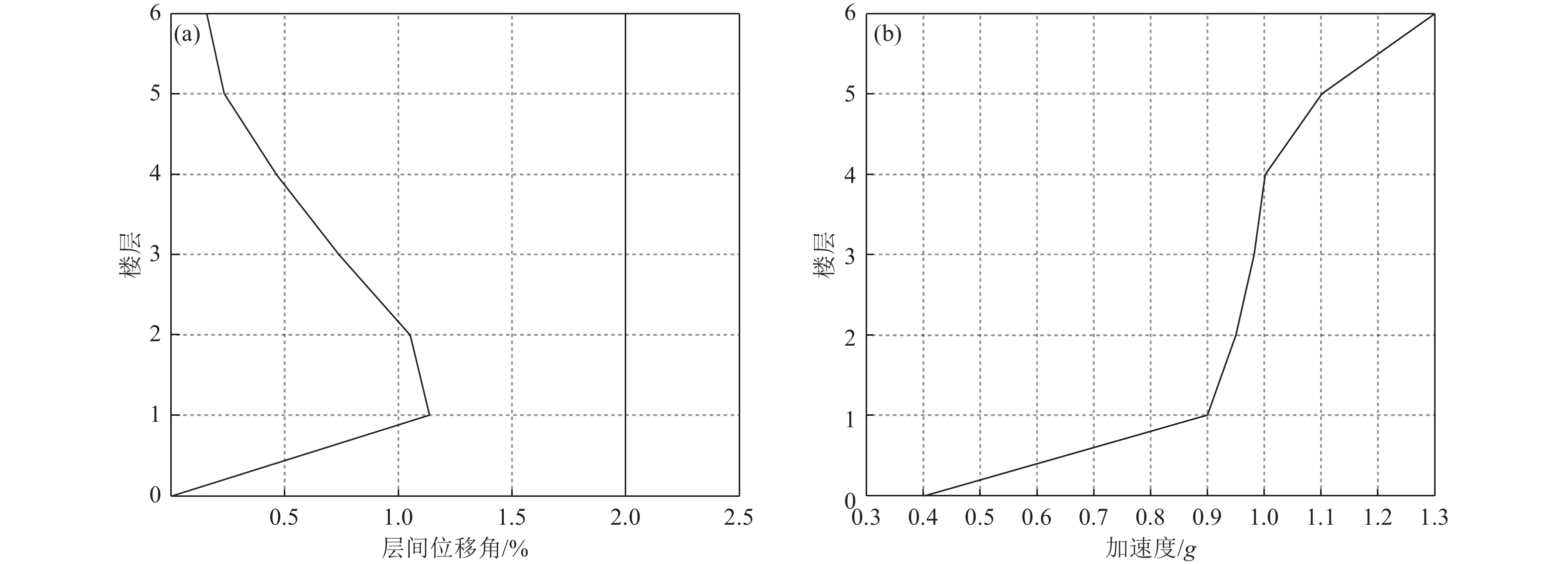Structural Monitoring and Seismic Resilience Evaluation of Buildings
-
摘要: 建筑结构响应是有效反映结构动力特性的最直接参数,开展结构动力响应实时监测可为结构抗震韧性评估提供准确的地震动输入。本文基于非结构构件损失构建结构抗震韧性评估方法,研究确定位移敏感型和加速度敏感型非结构构件的易损性模型。选择某六层钢筋混凝土框架结构进行实时监测系统建设,基于监测数据开展结构抗震韧性评估。通过构建建筑信息模型(BIM),并在有限元分析软件OpenSees中建立结构弹塑性分析模型,利用实时监测数据实现结构模型更新,直至监测数据与模型分析结果一致。由于实时监测数据峰值较低,结构不会发生塑性变形,因此选择10条双向非脉冲地震动模拟实时监测地震记录。根据层间位移角和楼面加速度分布,开展结构功能损失评估,得到该建筑结构的抗震韧性得分。分析表明,该结构抗震性能较好,在遭受地震破坏后,会发生非结构构件脱落,需要采取有效措施进一步提升建筑抗震韧性水平。Abstract: Building response is the immediate parameter to reflect the structural dynamic characteristic. Real-time earthquake response monitoring is introduced to provide accurate input ground motions for seismic resilience evaluation. The method for building seismic resilience evaluation is put forward based on the loss of the non-structural elements. The fragility models are respectively determined for the displacement sensitive and acceleration sensitive non-structural elements. A six-story reinforced concrete frame structure is selected to construct the real-time monitoring system and evaluation of its seismic resilience is carried out based on the system recordings. According to the building design documents and the technical requirements, the monitoring scheme is accomplished and the system is instrumented. The building information model (BIM) is established according to the design documentation. The elastoplastic finite element model is simultaneously constructed based on the software OpenSees, an open source for finite element analysis. The data recorded in an earthquake are applied to update the numerical model. The updating terminates when the simulated frequencies is similarly consistent to the identified values from the recorded data. However, the amplitudes are unconspicuous and no plastic deformation appears. Ten bidirectional non-pulse ground motions are selected as the input data to simulate the real-time monitoring waves. The peak inter-story drift ratio and the acceleration are figured out to evaluate the loss of the structure function, then the score of seismic resilience is achieved. Analysis results show that the earthquake resistant performance is in good condition. However, the non-structural elements will be broken and fall down during major earthquakes. Effective measures are needed to improve the seismic resilience of the building.
-
Key words:
- Real-time monitoring /
- Model update /
- Inter-story drift ratio /
- Floor acceleration /
- Seismic resilience
-
表 1 通过地震记录和模拟得到的结构自振周期
Table 1. Natural frequencies and mode directions identified from earthquake recordings and simulation
振型
编号识别周期
/Hz模拟周期
/Hz振型
方向1 0.659 0.663 南北 2 0.653 0.658 东西 3 0.252 0.258 南北 4 0.249 0.254 东西 表 2 基于标准反应谱选取的10组地震动
Table 2. 10 strong ground motions selected on the basis of standard response spectra
序号 地震名称 台站名称 年份 1方向PGA/g 2方向PGA/g 1 Friuli,Italy-01 Tolmezzo 1976 0.357 0.315 2 ImperialValley Delta 1979 0.350 0.236 3 Landers JoshuaTree 1992 0.284 0.274 4 Northridge-01 CanyonCountry 1994 0.404 0.315 5 Northridge-01 Castaic 1994 0.568 0.514 6 Northridge-01 LA-SaturnSt 1994 0.468 0.431 7 Kobe_Japan Kakogawa 1995 0.324 0.240 8 Kobe_Japan Shin-Osaka 1995 0.233 0.225 9 Chi-Chi_Taiwan CHY034 1999 0.300 0.249 10 HectorMine Hector 1999 0.328 0.265 表 3 吊顶和填充墙易损性参数
Table 3. The parameters for the fragility curves of the suspended ceiling and the in-filled wall
项目 吊顶 填充墙 DS1 DS2 DS1 DS2 易损性参数 θ 0.8440 1.0820 0.0012 0.0024 β 0.376 0.315 0.360 0.360 损失比/% 30 100 10 100 表 4 教学楼功能损伤情况
Table 4. The results of the function loss for the teaching building
楼层 LDisp LAcc Rloss j λj Rloss jλj Rloss 1层 0.99956 0.37316 0.786586 0.245675 0.193245 0.69 2层 1.00000 0.48663 0.825453 0.257814 0.212814 3层 0.89755 0.40736 0.730882 0.228277 0.166843 4层 0.55414 0.48094 0.529253 0.165302 0.087487 5层 0.11941 0.73749 0.329559 0.102931 0.033922 -
薄景山, 张毅毅, 郭晓云等, 2021. 结构抗震设计理论与方法的沿革和比较. 震灾防御技术, 16(3): 566−572.Bo J. S., Zhang Y. Y., Guo X. Y., et al., 2021. Evolution and comparison of different structural seismic design theories and methods. Technology for Earthquake Disaster Prevention, 16(3): 566−572. (in Chinese) 陈学伟, 林哲, 2014. 结构弹塑性分析程序OpenSEES原理与实例. 北京: 中国建筑工业出版社.Chen X. W., Lin Z., 2014. Structural nonlinear analysis program OpenSEES theory and tutorial. Beijing: China Architecture & Building Press. (in Chinese) 杜修力, 欧进萍, 1991. 建筑结构地震破坏评估模型. 世界地震工程, (3): 52—58. 杜修力, 王子理, 刘洪涛, 2018. 基于韧性设计的一种地下框架结构抗震新体系研究. 震灾防御技术, 13(3): 493—501.Du X. L., Wang Z. L., Liu H. T., 2018. Study of a seismic new system of underground frame structure based on toughness design. Technology for Earthquake Disaster Prevention, 13(3): 493—501. (in Chinese) 方东平, 李在上, 李楠等, 2017. 城市韧性——基于“三度空间下系统的系统”的思考. 土木工程学报, 50(7): 1—7.Fang D. P., Li Z. S., Li N., et al., 2017. Urban resilience: a perspective of system of systems in trio spaces. China Civil Engineering Journal, 50(7): 1—7. (in Chinese) 方东平, 李全旺, 李楠等, 2020. 社区地震安全韧性评估系统及应用示范. 工程力学, 37(10): 28—44.Fang D. P., Li Q. W., Li N., et al., 2020. An evaluation system for community seismic resilience and its application in a typical community. Engineering Mechanics, 37(10): 28—44. (in Chinese) 郭迅, 王波, 2019. 建设韧性城乡的技术途径. 震灾防御技术, 14(1): 52—59. doi: 10.11899/zzfy20190106Guo X., Wang B., 2019. The way to build resilient urban and rural areas. Technology for Earthquake Disaster Prevention, 14(1): 52—59. (in Chinese) doi: 10.11899/zzfy20190106 金星, 韦永祥, 陈学良等, 2007. 隔震建筑结构的强震观测与初步分析. 地震工程与工程振动, 27(6): 181—188.Jin X., Wei Y. X., Chen X. L., et al., 2007. Strong motion observation for a base-isolated building and its primary analysis. Journal of Earthquake Engineering and Engineering Vibration, 27(6): 181—188. (in Chinese) 金星, 韦永祥, 张红才等, 2009. 基于强震观测的隔震结构地震反应分析. 地震工程与工程振动, 29(2): 19—28.Jin X., Wei Y. X., Zhang H. C., et al., 2009. Analysis of the seismic responses of a base-isolated building on the basis of strong motion observation. Journal of Earthquake Engineering and Engineering Vibration, 29(2): 19—28. (in Chinese) 康现栋, 付皓然, 赵光等, 2021. 单体建筑抗震韧性评估方法研究与应用. 土木工程学报, 54(8): 37—42. doi: 10.15951/j.tmgcxb.2021.08.003Kang X. D., Fu H. R., Zhao G., et al., 2021. Research and application of evaluation methods for earthquake resilience of individual building structure. China Civil Engineering Journal, 54(8): 37—42. (in Chinese) doi: 10.15951/j.tmgcxb.2021.08.003 李鸿晶, 朱士云, Celebi M. , 2003. 强震观测建筑结构的地震反应分析. 地震工程与工程振动, 23(6): 31—36. doi: 10.13197/j.eeev.2003.06.005Li H. J., Zhu S. Y., Celebi M., 2003. Seismic response analysis of an instrumented building structure. Earthquake Engineering and Engineering Vibration, 23(6): 31—36. (in Chinese) doi: 10.13197/j.eeev.2003.06.005 李戚齐, 曲哲, 解全才等, 2019. 我国公共建筑中吊顶的震害特征及其易损性分析. 工程力学, 36(7): 207—215.Li Q. Q., Qu Z., Xie Q. C., et al., 2019. Seismic damage characteristics and fragility of suspended ceilings in Chinese public buildings. Engineering Mechanics, 2019, 36(7): 207—215. (in Chinese) 李文俊, 曲哲, 孙海林等, 2021. 损失分布和非结构损失对房屋建筑地易损性的影响. 世界地震工程, 37(4): 109—121. doi: 10.3969/j.issn.1007-6069.2021.04.013Li W. J., Qu Z., Sun H. L., et al., 2021. Influence of loss distribution and non-structural loss on the seismic vulnerability of buildings. World Earthquake Engineering, 37(4): 109—121. (in Chinese) doi: 10.3969/j.issn.1007-6069.2021.04.013 林旭川, 2017. 城市建筑群地震灾害数值仿真与风险控制. 城市与减灾, (3): 18—22. doi: 10.3969/j.issn.1671-0495.2017.03.007 王飞, 刘英华, 任志林等, 2015. 北京市防震减灾中心结构地震反应观测及振动特性识别. 震灾防御技术, 10(3): 539—546. doi: 10.11899/zzfy20150307Wang F., Liu Y. H., Ren Z. L., et al., 2015. Structural seismic vibration observation and identification for the building of disaster reduction center in Beijing. Technology for Earthquake Disaster Prevention, 10(3): 539—546. (in Chinese) doi: 10.11899/zzfy20150307 王飞, 康现栋, 罗桂纯等, 2020. 唐山古冶5.1级地震北京地区建筑结构地震反应观测记录初步分析. 地震科学进展, 50(7): 20—25. doi: 10.3969/j.issn.2096-7780.2020.07.004Wang F., Kang X. D., Luo G. C., et al., 2020. Preliminary analysis of the structural seismic response observation data in Beijing recorded in Guye earthquake with magnitude 5.1. Progress in Earthquake Sciences, 50(7): 20—25. (in Chinese) doi: 10.3969/j.issn.2096-7780.2020.07.004 王亚勇, 2008. 汶川地震建筑震害启示——抗震概念设计. 建筑结构学报, 29(4): 20—25. doi: 10.3321/j.issn:1000-6869.2008.04.003Wang Y. Y., 2008. Lessons learnt from building damages in the Wenchuan earthquake——seismic concept design of buildings. Journal of Building Structures, 29(4): 20—25. (in Chinese) doi: 10.3321/j.issn:1000-6869.2008.04.003 谢礼立, 于双久, 1982. 强震观测与分析原理. 北京: 地震出版社. 谢贤鑫, 张令心, 曲哲, 2018. 基于修复性的砌体填充墙易损性研究. 建筑结构学报, 39(12): 159—167. doi: 10.14006/j.jzjgxb.2018.12.019Xie X. X., Zhang L. X., Qu Z., 2018. Reparability-based fragility analysis of masonry infills in buildings. Journal of Building Structures, 39(12): 159—167. (in Chinese) doi: 10.14006/j.jzjgxb.2018.12.019 谢贤鑫, 张令心, 曲哲, 2019. 砌体填充墙中塑钢门窗的地震易损性试验研究. 地震工程与工程振动, 39(4): 184—191. doi: 10.13197/j.eeev.2019.04.184.xiexx.019Xie X. X., Zhang L. X., Qu Z., 2019. Experimental seismic fragility of windows and doors with plastic-steel frames in masonry infill walls. Earthquake Engineering and Engineering Dynamics, 39(4): 184—191. (in Chinese) doi: 10.13197/j.eeev.2019.04.184.xiexx.019 尹建华, 冀昆, 崔建文等, 2018. 基于中远场小震结构台阵观测数据的地震响应分析. 震灾防御技术, 13(4): 911—920.Yin J. H., Ji K., Cui J. W., et al., 2018. Analysis of structural response by using strong ground motion recordings from middle and far-field small earthquake events. Technology for Earthquake Disaster Prevention, 13(4): 911—920. (in Chinese) 中华人民共和国国家质量监督检验检疫总局, 中国国家标准化管理委员会, 2016. GB 18306—2015 中国地震动参数区划图. 北京: 中国标准出版社.General Administration of Quality Supervision, Inspection and Quarantine of the People’s Republic of China, Standardization Administration, 2016. GB 18306—2015 Seismic ground motion parameters zonation map of China. Beijing: Standards Press of China. (in Chinese) 中华人民共和国住房和城乡建设部, 中华人民共和国国家质量监督检验检疫总局, 2010. GB 50011—2010 建筑抗震设计规范. 北京: 中国建筑工业出版社.Ministry of Housing and Urban-Rural Development of the People's Republic of China, General Administration of Quality Supervision, Inspection and Quarantine of the People's Republic of China, 2010. GB 50011—2010 Code for seismic design of buildings. Beijing: China Architecture & Building Press. (in Chinese) 中华人民共和国住房和城乡建设部, 中华人民共和国国家质量监督检验检疫总局, 2012. GB 50003—2011 砌体结构设计规范. 北京: 中国建筑工业出版社.Ministry of Housing and Urban-Rural Development of the People's Republic of China, General Administration of Quality Supervision, Inspection and Quarantine of the People's Republic of China, 2012. GB 50003—2011 Code for design of masonry structures. Beijing: China Architecture & Building Press. (in Chinese) 周正华, 李铁, 代志勇等, 2004. 建筑结构地震反应观测系统. 地球物理学进展, 19(4): 868—872.Zhou Z. H., Li T., Dai Z. Y., et al., 2004. Observation system of responses of building to earthquake. Progress in Geophysics, 19(4): 868—872. (in Chinese) Ayers J. M. , Phillips R. , 1996. Northridge earthquake hospital water damage study. Los Angeles: Ayers & Ezers Associates, Inc. Bruneau M. , Chang S. E. , Eguchi R. T. , et al. , 2003. A framework to quantitatively assess and enhance the seismic resilience of communities. Earthquake Spectra, 19(4): 733—752. doi: 10.1193/1.1623497 FEMA, 2000. FEMA 356-1 Prestandard and commentary for the seismic rehabilitation of buildings. Washington: Federal Emergency Management Agency. FEMA, 2012. Seismic performance assessment of buildings. Washington: Federal Emergency Management Agency. Miranda E. , Mosqueda G. , Retamales R. , et al. , 2012. Performance of nonstructural components during the 27 February 2010 Chile earthquake. Earthquake Spectra, 28(S1): 453—471. Scott B. D. , Park R. , Priestley M. J. N. , 1982. Stress-strain behavior of concrete confined by overlapping hoops at low and high strain rates. ACI Structural Journal, 79(1): 13—27. Wang D. Z. , Dai J. W. , Qu Z. , et al. , 2016. Shake table tests of suspended ceilings to simulate the observed damage in the MS 7.0 Lushan earthquake, China. Earthquake Engineering and Engineering Vibration, 15(2): 239―249. doi: 10.1007/s11803-016-0319-z -



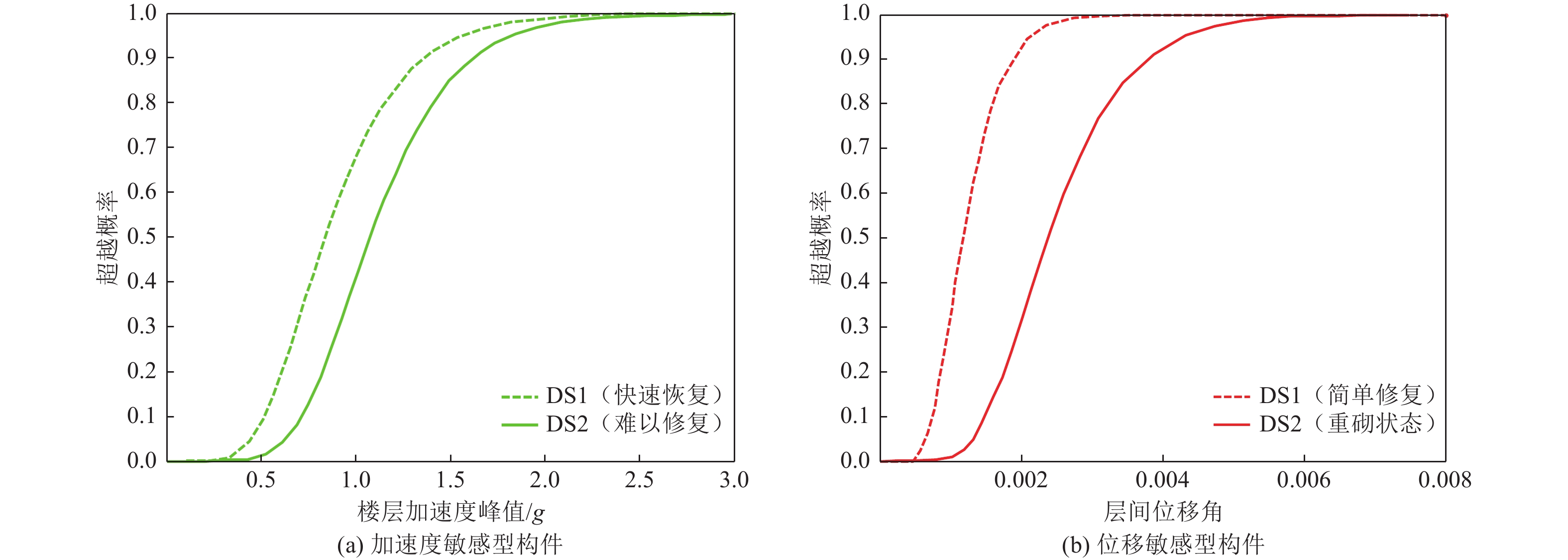
 下载:
下载:

